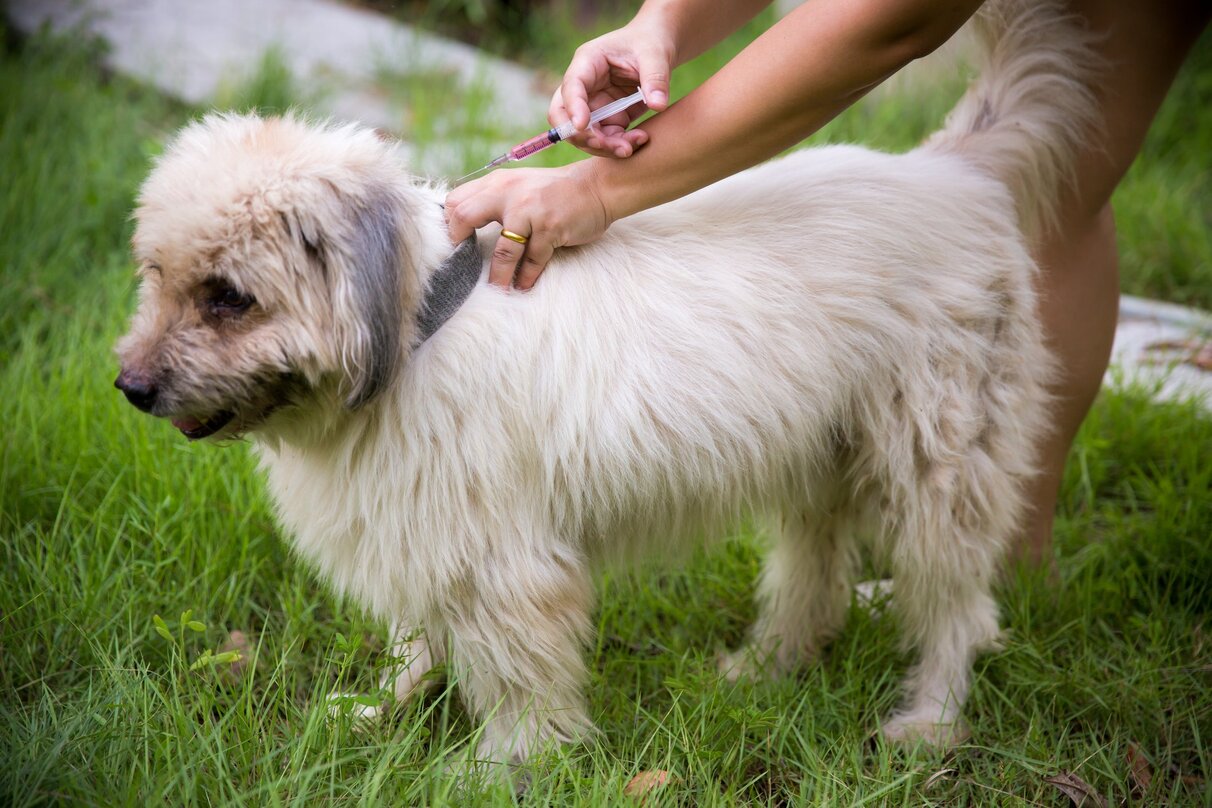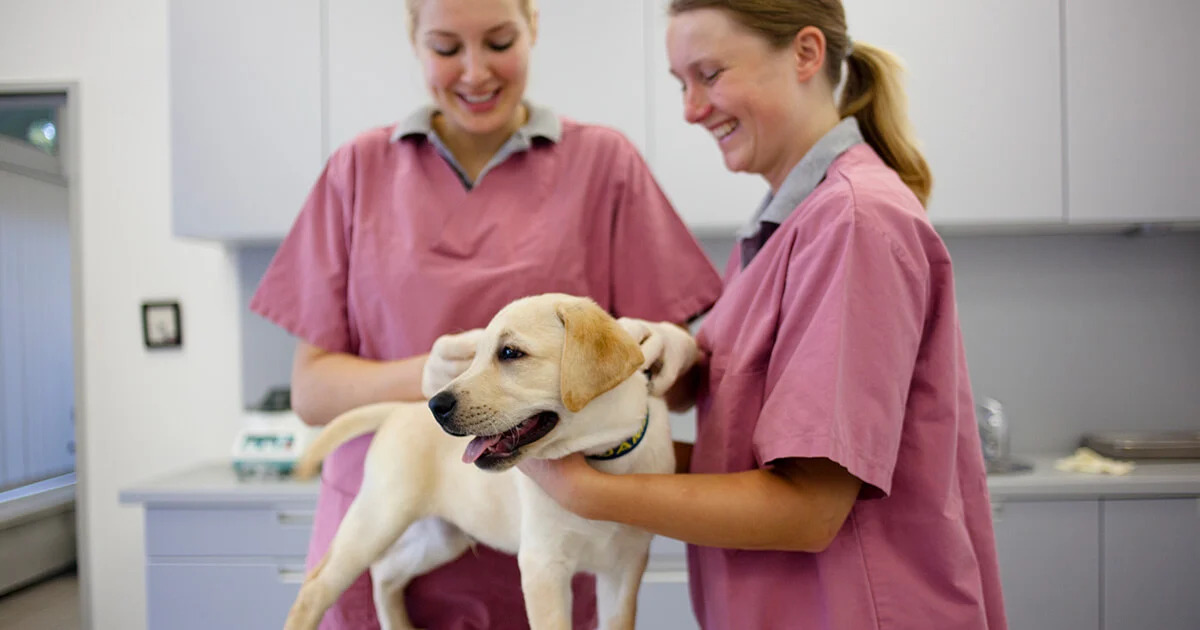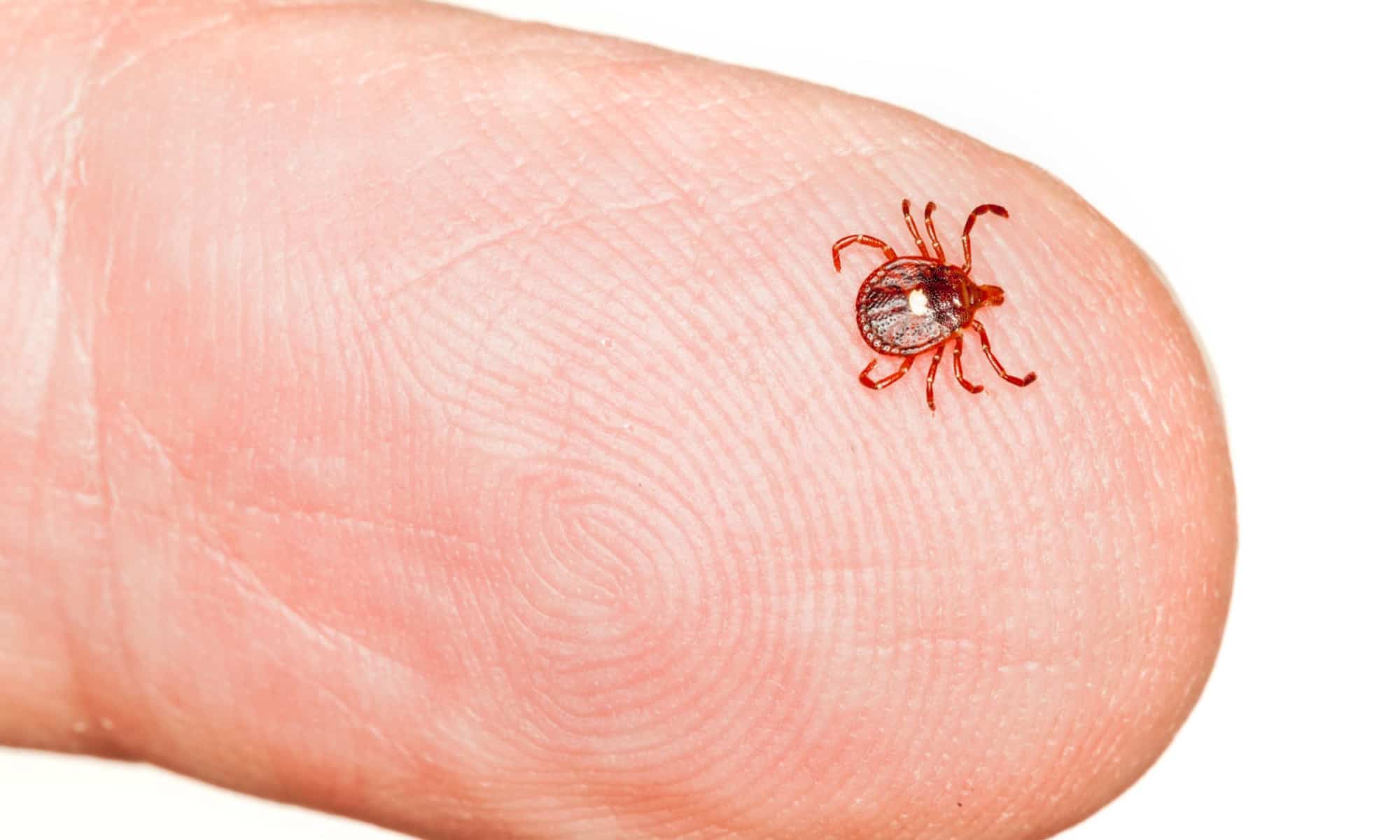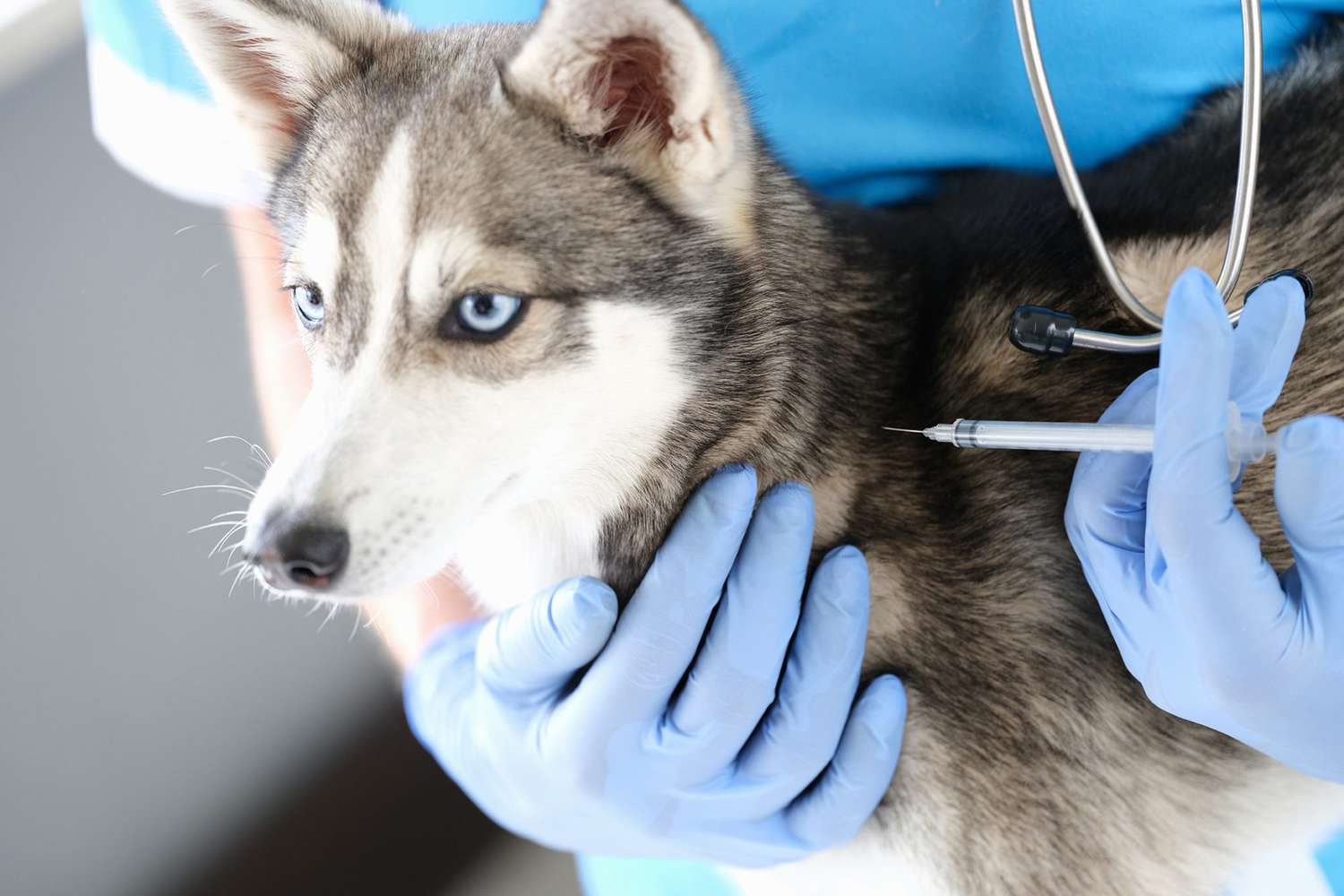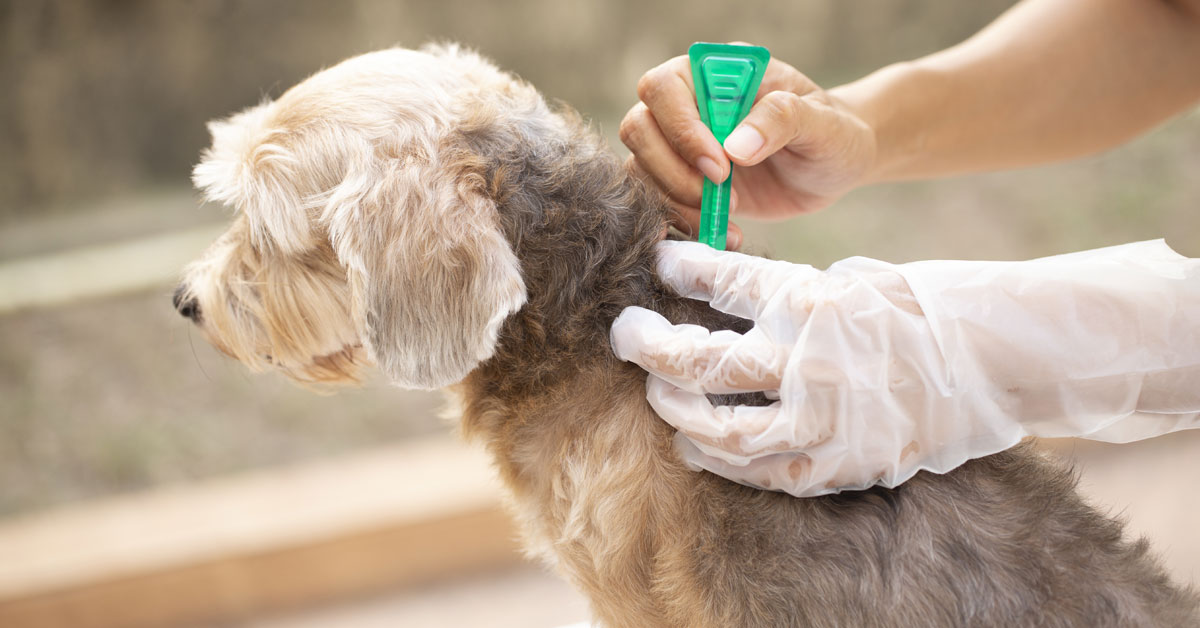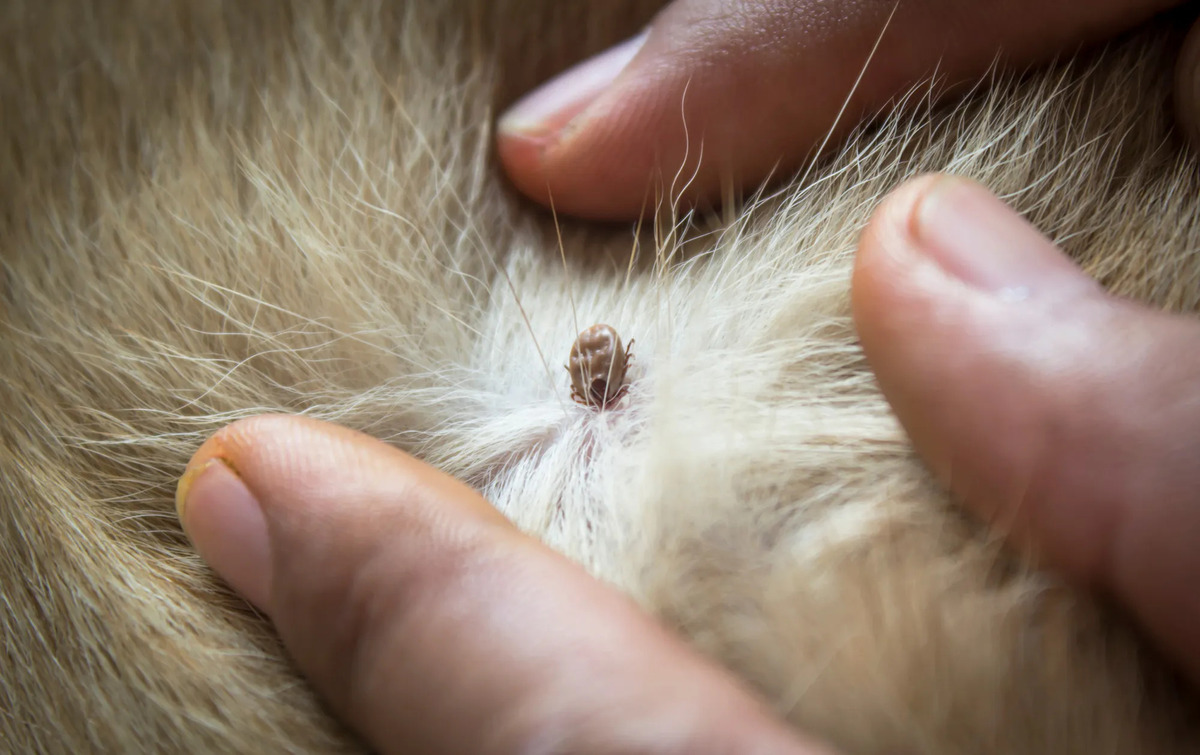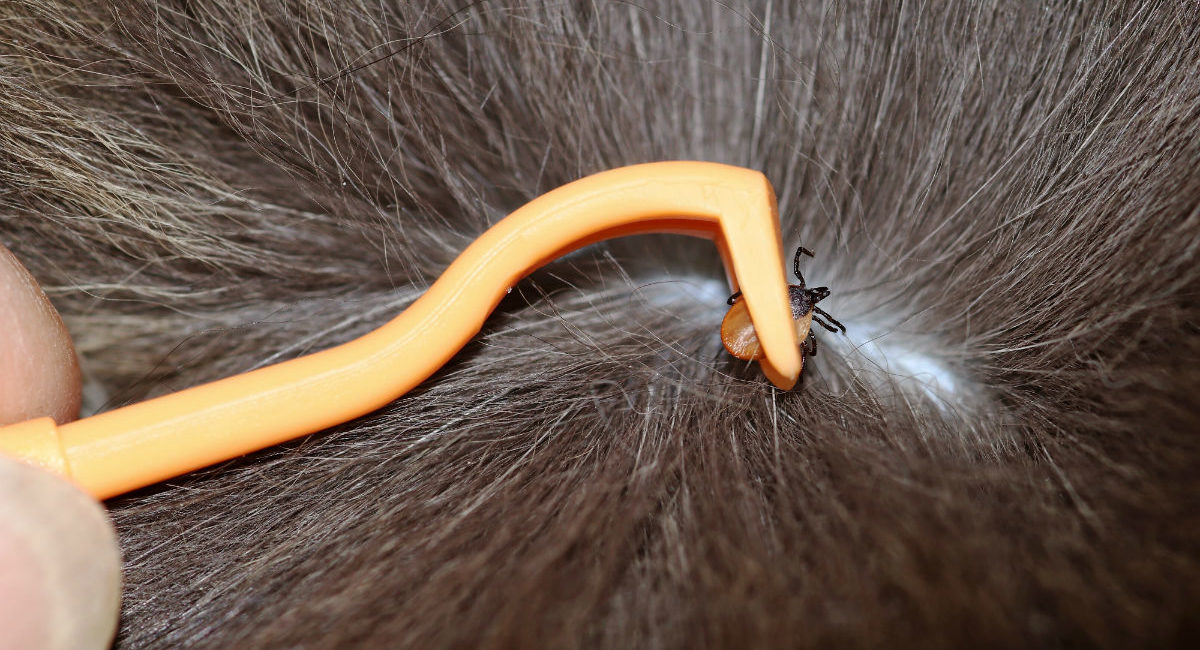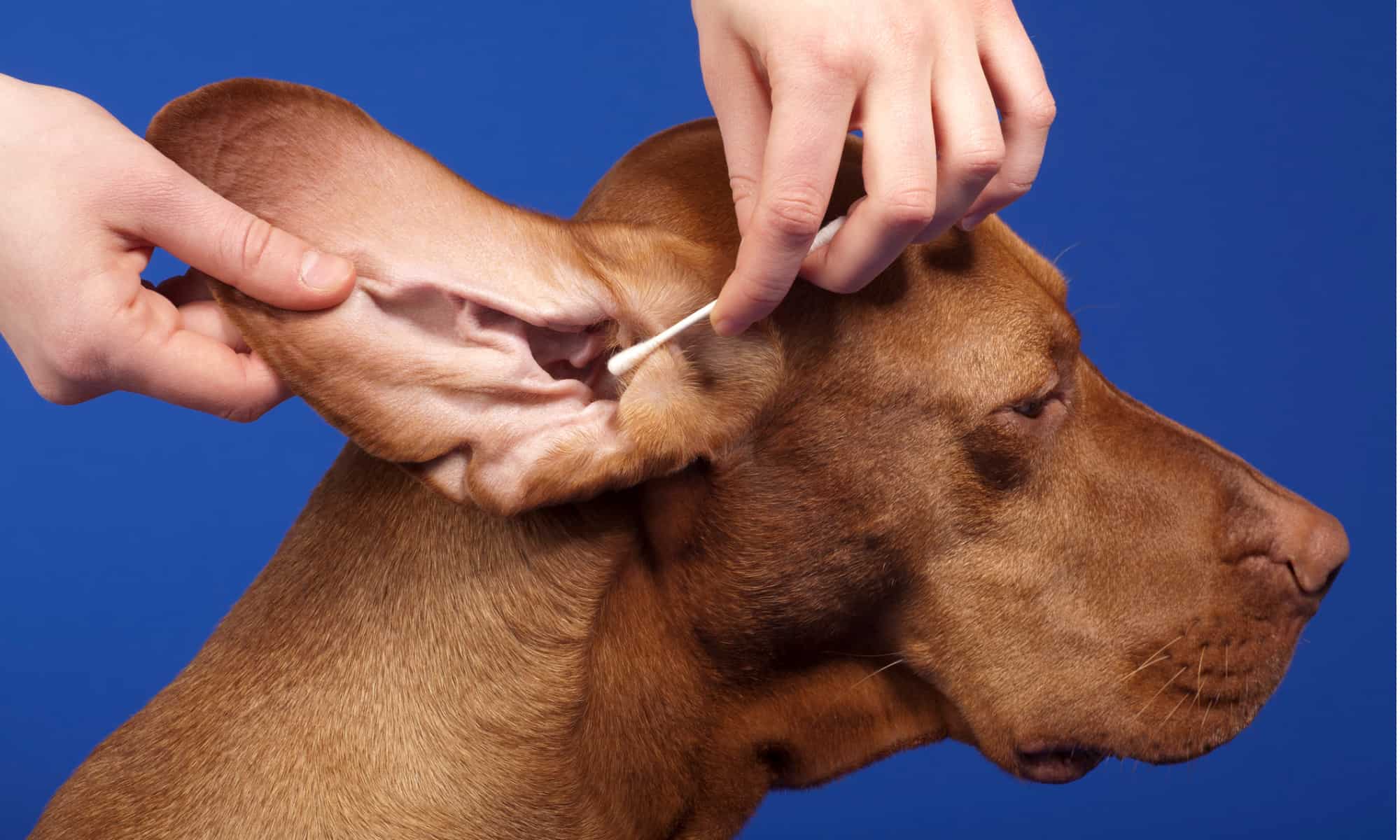Home>Health & Wellness>Common Health Issues>Where Do Dogs Get Ticks?


Common Health Issues
Where Do Dogs Get Ticks?
Published: February 5, 2024
Learn about common health issues for dogs, including where they get ticks. Protect your pet with the right prevention and treatment.
(Many of the links in this article redirect to a specific reviewed product. Your purchase of these products through affiliate links helps to generate commission for Pawsomeoldies.com, at no extra cost. Learn more)
Table of Contents
Introduction
Ticks are a common concern for dog owners, as these tiny parasites can pose significant health risks to our furry companions. Understanding where dogs can pick up ticks and how to prevent infestations is crucial for ensuring the well-being of our four-legged friends.
In this article, we will delve into the world of ticks and explore the common places where dogs are susceptible to picking up these pesky parasites. Additionally, we will discuss the importance of regularly checking dogs for ticks and implementing preventive measures to safeguard their health.
By gaining a deeper understanding of ticks and their habitats, dog owners can take proactive steps to minimize the risk of tick infestations and protect their canine companions from potential health issues. Let's embark on this informative journey to equip ourselves with the knowledge and strategies necessary to keep our dogs tick-free and healthy.
Understanding Ticks and Their Habitats
Ticks are small, blood-sucking parasites that belong to the arachnid family. These ectoparasites thrive in diverse environments, including wooded areas, grassy fields, and even urban landscapes. Understanding the habitats where ticks are commonly found is essential for dog owners to effectively protect their pets from potential infestations.
Ticks typically favor environments with high humidity and abundant vegetation, as these conditions provide them with the ideal habitat to thrive. Wooded areas and dense shrubbery create the perfect shelter for ticks, allowing them to latch onto passing animals, including dogs, in search of a blood meal. Moreover, grassy fields and meadows serve as prime locations for ticks to await potential hosts, making these areas high-risk zones for dogs.
In addition to natural landscapes, ticks can also be prevalent in urban settings. Parks, hiking trails, and even backyard gardens can harbor ticks, posing a threat to dogs that frequent these areas. It's important to recognize that ticks are adaptable creatures capable of surviving in various environments, underscoring the need for vigilance regardless of the surroundings.
Understanding the life cycle of ticks is equally crucial in comprehending their habitats. Ticks progress through four life stages: egg, larva, nymph, and adult. During each stage, ticks require a blood meal to advance to the next phase of their life cycle. This reliance on blood sustains their survival and perpetuates their presence in diverse habitats where potential hosts, such as dogs, abound.
By familiarizing themselves with the habitats favored by ticks and the factors that contribute to their proliferation, dog owners can proactively mitigate the risk of tick infestations. This knowledge empowers pet owners to take preemptive measures to safeguard their dogs from these persistent parasites, ultimately promoting the well-being and health of their beloved canine companions.
Common Places Where Dogs Pick Up Ticks
-
Wooded Areas: Dogs exploring wooded areas, such as forests or wooded trails, are at a heightened risk of encountering ticks. These environments provide ticks with ample vegetation and moisture, creating an ideal habitat for these parasites. As dogs weave through the underbrush or meander along forest paths, ticks can easily latch onto their fur, seeking a blood meal.
-
Grassy Fields and Meadows: Dogs frolicking in open grassy fields or meadows are susceptible to picking up ticks. The tall grass and abundant foliage in these areas offer ticks a vantage point to latch onto passing animals, including dogs. The combination of favorable humidity and ample vegetation makes grassy fields and meadows prime locations for ticks to await potential hosts.
-
Parks and Recreational Areas: Urban parks and recreational spaces, frequented by dog owners for leisurely walks and outdoor activities, can harbor ticks. Ticks thrive in these environments, particularly in areas with dense shrubbery or overgrown vegetation. Dogs exploring these spaces are at risk of encountering ticks, emphasizing the importance of vigilance even in urban settings.
-
Backyard Gardens: Even the cozy confines of a backyard garden can harbor ticks, posing a potential threat to dogs. Ticks can lurk in garden foliage and vegetation, waiting to latch onto pets as they explore the outdoor space. This highlights the need for pet owners to be mindful of tick exposure, even within the confines of their own property.
-
Hiking Trails: Dogs accompanying their owners on hiking excursions are exposed to tick habitats, especially in areas with dense vegetation and wooded trails. Ticks thrive in these environments, making hiking trails a potential hotspot for tick encounters. The adventurous spirit of dogs exploring these trails can inadvertently lead to tick exposure, necessitating proactive preventive measures.
-
Wildlife Interaction: Dogs that interact with wildlife, such as squirrels, rabbits, or deer, are at an increased risk of encountering ticks. Wildlife habitats often coincide with tick habitats, and dogs may inadvertently pick up ticks while exploring or encountering wildlife during outdoor activities.
-
Campgrounds and Outdoor Retreats: Dogs accompanying their owners on camping trips or outdoor retreats are susceptible to tick exposure. Campgrounds and outdoor recreational areas, surrounded by natural landscapes, can harbor ticks, posing a risk to dogs enjoying the great outdoors.
Understanding the common places where dogs are susceptible to picking up ticks is essential for pet owners to implement preventive measures and minimize the risk of tick infestations. By recognizing these high-risk environments, dog owners can take proactive steps to protect their furry companions and ensure their well-being.
How to Check Your Dog for Ticks
Regularly inspecting your dog for ticks is a crucial aspect of responsible pet ownership, as it allows you to promptly detect and remove any ticks before they pose a threat to your dog's health. Here's a comprehensive guide on how to effectively check your dog for ticks:
1. Establish a Routine: Make tick checks a routine practice, especially after your dog has spent time outdoors in areas where ticks are prevalent. This includes wooded areas, grassy fields, and parks. By incorporating tick checks into your regular grooming and care regimen, you can promptly identify and address any tick infestations.
Read more: Where Are American Dog Ticks Found?
2. Thorough Examination: Begin by conducting a thorough examination of your dog's entire body, paying close attention to areas where ticks are commonly found. These include the ears, around the eyes, under the collar, between the toes, and in the groin and armpit areas. Ticks can also hide in the fur, so part the hair to inspect the skin beneath.
3. Use Your Hands and Eyes: Run your hands over your dog's body, feeling for any unusual bumps or lumps. Ticks can vary in size, ranging from tiny nymphs to larger adult ticks, so a tactile examination is essential. Additionally, visually scan your dog's coat for any dark, raised spots that may indicate the presence of ticks.
4. Tick Removal Tools: Keep specialized tick removal tools, such as fine-tipped tweezers or tick removal hooks, readily available. If you discover a tick during your examination, use these tools to safely and effectively remove the tick from your dog's skin. Grasp the tick as close to the skin's surface as possible and pull upward with steady, even pressure to ensure the entire tick is removed.
5. Vigilance and Care: After removing a tick, disinfect the area on your dog's skin where the tick was attached. Monitor the site for any signs of inflammation or infection. It's also advisable to save the removed tick in a sealed container in case your veterinarian needs to identify the species for potential health assessment.
By incorporating these practices into your routine, you can diligently check your dog for ticks and take proactive measures to safeguard their well-being. Regular tick checks not only protect your dog from potential health risks associated with tick-borne diseases but also foster a strong bond based on attentive care and responsible pet ownership.
Read more: Where Do Fleas Like To Be On Dogs
Preventing Tick Infestations in Dogs
Preventing tick infestations in dogs is paramount for ensuring the health and well-being of our canine companions. Implementing proactive measures to minimize the risk of tick encounters and effectively repel these parasites is essential for safeguarding dogs from potential health issues associated with tick-borne diseases. Here are comprehensive strategies to prevent tick infestations in dogs:
1. Tick Prevention Products:
Utilize veterinarian-recommended tick prevention products, such as topical treatments, oral medications, and tick collars. These products are designed to repel ticks and prevent infestations, offering a crucial line of defense against these persistent parasites. Regular application and administration of these preventive treatments are instrumental in protecting dogs from tick encounters.
2. Environmental Management:
Maintain a well-groomed and tidy outdoor environment to minimize tick habitats around your home. Regularly mow the lawn, trim shrubbery, and remove leaf litter to reduce tick-friendly environments. Creating a landscape that is less conducive to tick survival can significantly lower the risk of tick infestations for dogs.
3. Tick-Resistant Dog Gear:
Outfit your dog with tick-resistant accessories, such as tick-repellent collars and clothing treated with tick-repelling solutions. These specialized gear items provide an additional layer of protection, reducing the likelihood of ticks latching onto your dog during outdoor excursions.
Read more: What Time Of Year Do Dogs Get Ticks
4. Routine Tick Checks:
Consistently conduct thorough tick checks on your dog, especially after outdoor activities. Establishing a routine for inspecting your dog's coat and skin enables early detection and prompt removal of any ticks, preventing potential infestations and minimizing the risk of tick-borne diseases.
5. Vaccination Against Tick-Borne Diseases:
Consult with your veterinarian about available vaccinations for tick-borne diseases, such as Lyme disease and Rocky Mountain spotted fever. Vaccinating your dog against these diseases can bolster their immunity and provide an added layer of protection against the potential health risks posed by tick encounters.
6. Awareness and Education:
Stay informed about the prevalence of ticks in your region and the associated health risks. Educate yourself about the signs and symptoms of tick-borne diseases in dogs, enabling you to promptly seek veterinary care if necessary. Heightened awareness and knowledge empower dog owners to take proactive measures to prevent tick infestations and protect their pets.
By integrating these preventive strategies into your dog care routine, you can effectively mitigate the risk of tick infestations and create a safer environment for your beloved canine companion. Proactive tick prevention not only safeguards your dog's health but also fosters a nurturing and protective bond based on attentive care and responsible pet ownership.
Conclusion
In conclusion, understanding where dogs can pick up ticks and implementing proactive measures to prevent infestations are essential components of responsible pet ownership. Ticks, pervasive in diverse habitats ranging from wooded areas to urban landscapes, pose a significant health risk to dogs due to the potential transmission of tick-borne diseases. By gaining insight into the common places where dogs are susceptible to encountering ticks, pet owners can take preemptive actions to safeguard their furry companions.
The prevalence of ticks in wooded areas, grassy fields, parks, and even backyard gardens underscores the need for vigilance in diverse environments. Dogs exploring these spaces are at risk of encountering ticks, necessitating regular tick checks and the implementation of preventive measures. By establishing a routine for inspecting dogs for ticks and utilizing tick prevention products, pet owners can significantly reduce the risk of tick infestations and mitigate the potential health consequences for their beloved pets.
Furthermore, the importance of environmental management, tick-resistant dog gear, and routine tick checks cannot be overstated. These strategies, coupled with vaccination against tick-borne diseases and ongoing education about tick awareness, empower dog owners to create a safer and healthier environment for their canine companions. By integrating these preventive measures into their dog care regimen, pet owners demonstrate a commitment to the well-being and longevity of their furry friends.
Ultimately, the proactive prevention of tick infestations not only protects dogs from potential health risks but also fosters a strong bond based on attentive care and responsible pet ownership. By staying informed, vigilant, and proactive, dog owners can create a safer and more enjoyable outdoor experience for their dogs, ensuring that they can explore the world with minimal risk of encountering ticks and the associated health concerns.
In essence, the journey to keeping dogs tick-free and healthy begins with knowledge, awareness, and proactive measures. By embracing these principles, pet owners can provide their dogs with a safer and more fulfilling outdoor lifestyle while minimizing the risk of tick-related health issues.
